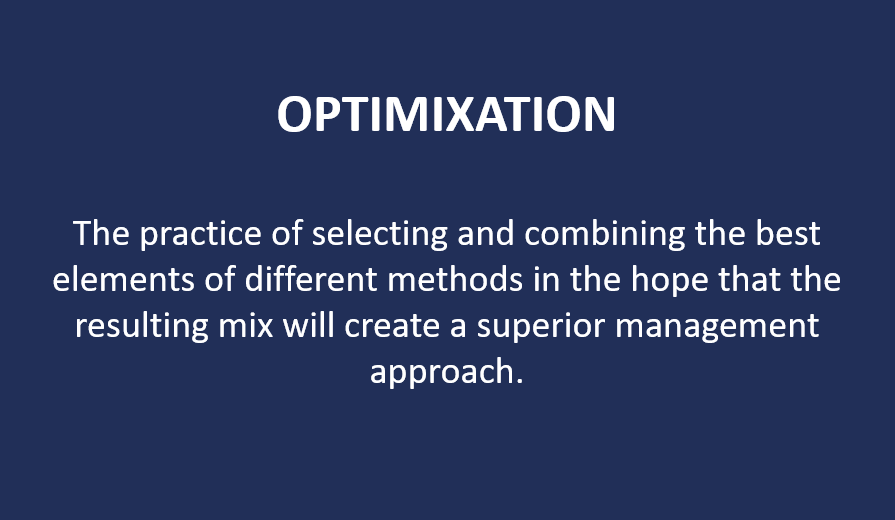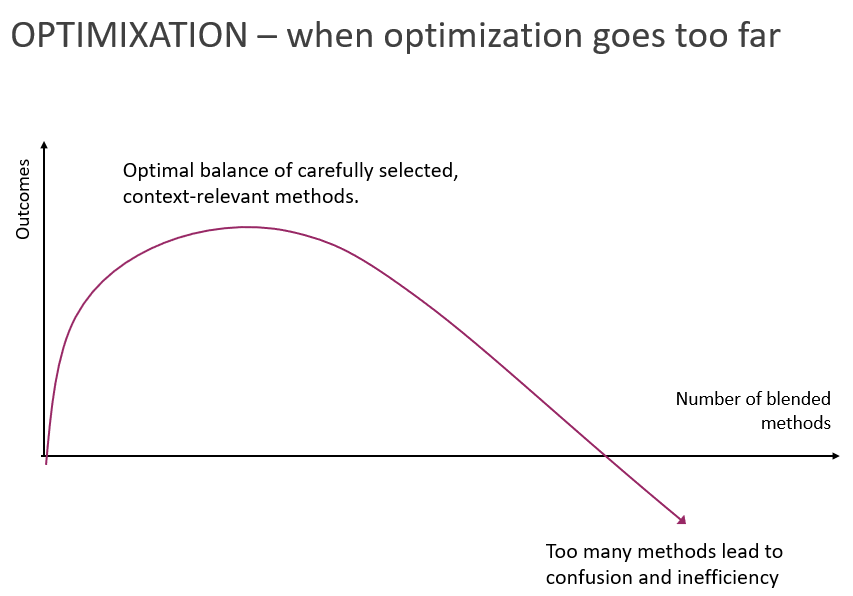Optimixation is a new term describing the unintended negative consequences that occur when optimization is taken too far.
OPTIMIXATION refers to the practice of selecting and combining elements from various methods in the hope that the resulting mix will produce a superior management approach.
While this might seem like a smart strategy, it often stems from a blind commitment to continual incremental improvements — even when the situation calls for deeper reflection or structural redesign instead.

As a result, organizations frequently pile on more practices, approaches, and jargon, often drawn from unrelated domains, without any coherent logic or integration. This patchwork of methods may look innovative, but it can dilute focus, create confusion, and ultimately reduce system-level quality.
We should be especially cautious when reviewing recently updated frameworks. Many of them seem to adopt every trending buzzword, often without critically examining the method’s relevance, compatibility, or impact on the original method goals.
In short, not every mix is an improvement. Sometimes, less is more — and true progress requires clarity, not clutter.

Optimixation results in adding complexities and heterogeneities that appear innovative and modern. The next typical step is a method maturity assessment—such as DevOps or ITIL. Over time, the ritualized method becomes the goal itself, as people forget the original motivation behind its adoption. We stop measuring the benefits and outcomes derived from the methodology and instead focus on practicing the method for its own sake. 